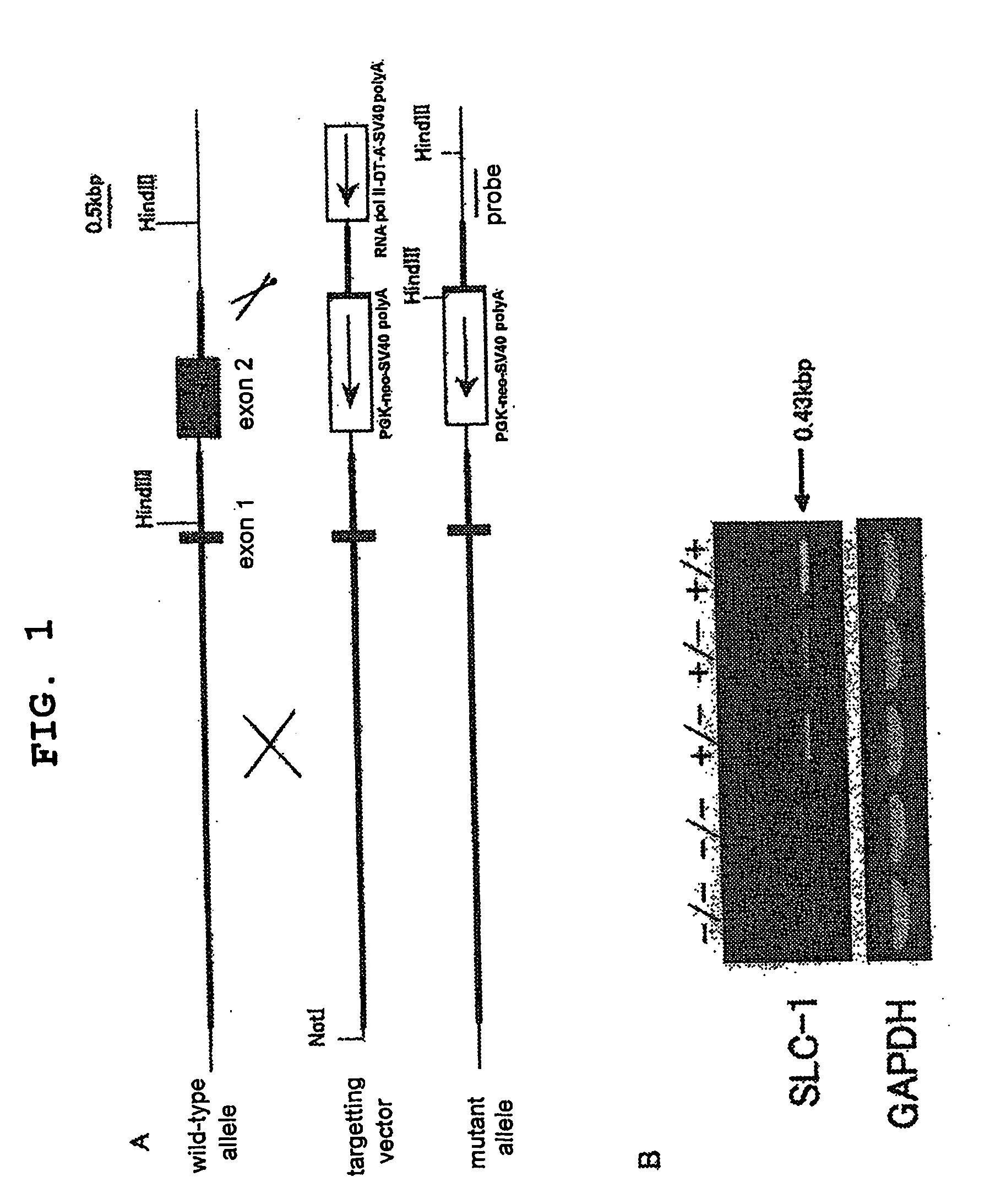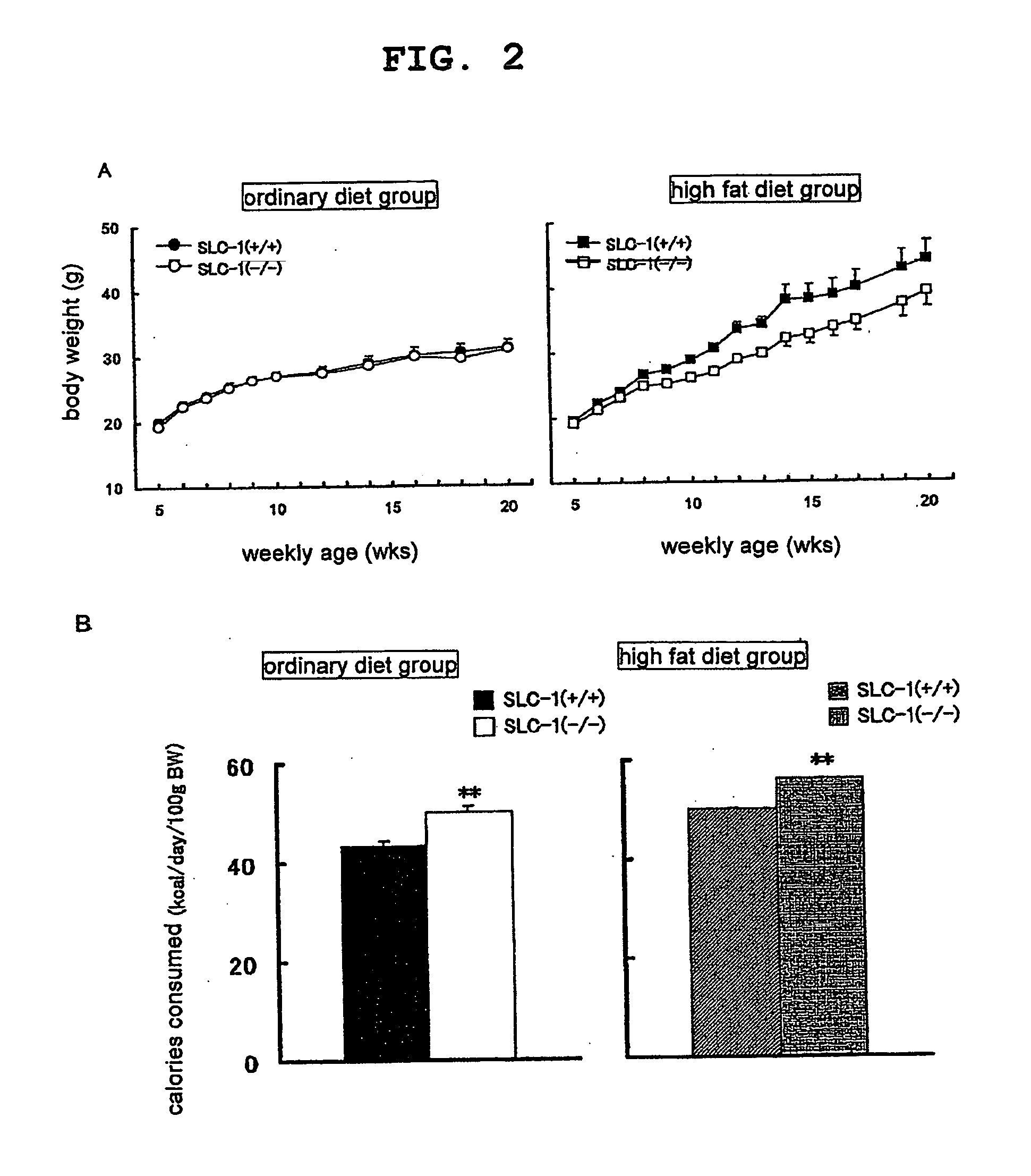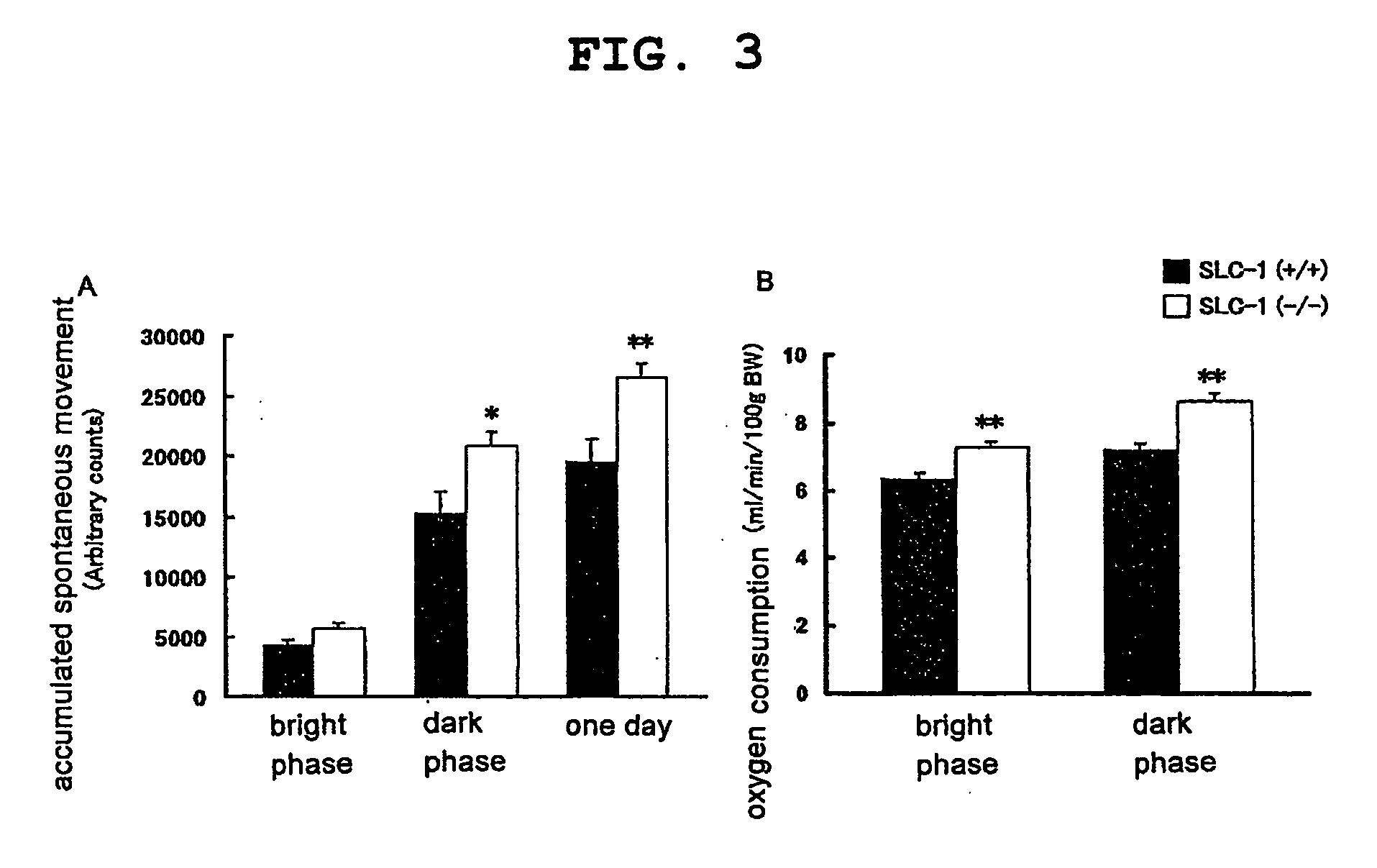Genetically Modified Animal and Use Thereof
- Summary
- Abstract
- Description
- Claims
- Application Information
AI Technical Summary
Benefits of technology
Problems solved by technology
Method used
Image
Examples
example 1
Preparation of Mice Deficient in the SLC-1 Gene
[0114]The plasmid pSLCTA-2 comprising a targeting vector (FIG. 1A) was prepared by cloning with a 7.7-kbp XbaI fragment comprising the exon 1 of mouse SLC-1 genomic DNA and a 0.87 kbp portion of the exon 2 from SacI to the EcoRI of the 3′ nontranslated region as the 5′ arm and 3′ arm, respectively, then introducing them into pKOScrambler (produced by Lexicon Genetics), and replacing the 7 transmembrane region of the exon 2 with the neomycin resistance gene. The targeting vector was linearized by NotI cleavage, and electroporated into 129SvEv mouse-derived ES cell AB2.2 (produced by Lexicon Genetics) using a gene pulser (produced by Bio-Rad), after which the cells were subjected to selection culture with the neomycin analogue G418 (produced by Lexicon Genetics). From 480 cells of a G418 resistant line, genomic DNA was extracted; PCR screening was performed using the NE5 primer (5′-CTAAAGCGCATGCTCCAGAC-3′: SEQ ID NO:1) in the neomycin res...
example 2
Preparation of Individuals Resulting from Hybridization of KKAy Mice or KK Mice and SLC-1 Homo-Deficient (− / −) Mice
[0116]By crossing an SLC-1(− / −) mouse made to be congenic and a KKAy mouse, SLC-1 hetero-deficient (+ / −) mice incorporating 50% of the genetic background of the KKAy mouse or KK mouse were acquired. By intercrossing each, SLC-1 wild (+ / +) mouse strains [KKAy / SLC-1(+ / +), KK / SLC-1(+ / +)] and SLC-1(− / −) mouse strains [KKAy / SLC-1(− / −), KK / SLC-1(− / −)] were acquired.
example 3
General Properties of SLC-1(− / −) mice
[0117]SLC-1(+ / +) mice and SLC-1(− / −) mice were individually reared under the conditions of a 12-hour lighting cycle at a room temperature of 24±1° C. and a humidity of 55±5% from 5 weeks of age. The feed used was an ordinary diet (CE-2, 11.6% kcal from fat, 346.8 kcal / 100 g, produced by Clea Japan), or a high fat diet containing unsalted butter (40.7% kcal from fat, 464.6 kcal / 100 g, produced by Clea Japan).
[0118]Body weight was measured from 8:00 am on the specified days of each week. For food intake, weekly food intake was measured, and converted to daily calorific intake per 100 g of body weight using the calculation formula of weekly food intake (g)×calorific value of food (kcal / 100 g) / body weight (g) / 7 (day). For blood parameters, orbital blood was drawn under satiation from 8:00 am using a heparinized blood drawing tube (produced by Drummond Scientific Company) at 12 weeks of age and 21 weeks of age, and glucose (DRI-CHEM System, produced b...
PUM
 Login to View More
Login to View More Abstract
Description
Claims
Application Information
 Login to View More
Login to View More - R&D
- Intellectual Property
- Life Sciences
- Materials
- Tech Scout
- Unparalleled Data Quality
- Higher Quality Content
- 60% Fewer Hallucinations
Browse by: Latest US Patents, China's latest patents, Technical Efficacy Thesaurus, Application Domain, Technology Topic, Popular Technical Reports.
© 2025 PatSnap. All rights reserved.Legal|Privacy policy|Modern Slavery Act Transparency Statement|Sitemap|About US| Contact US: help@patsnap.com



